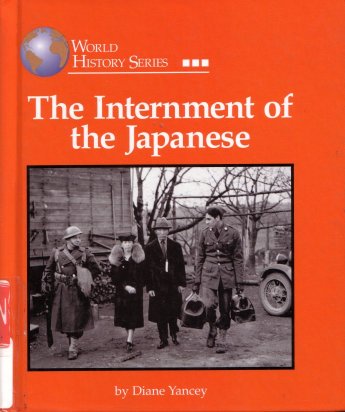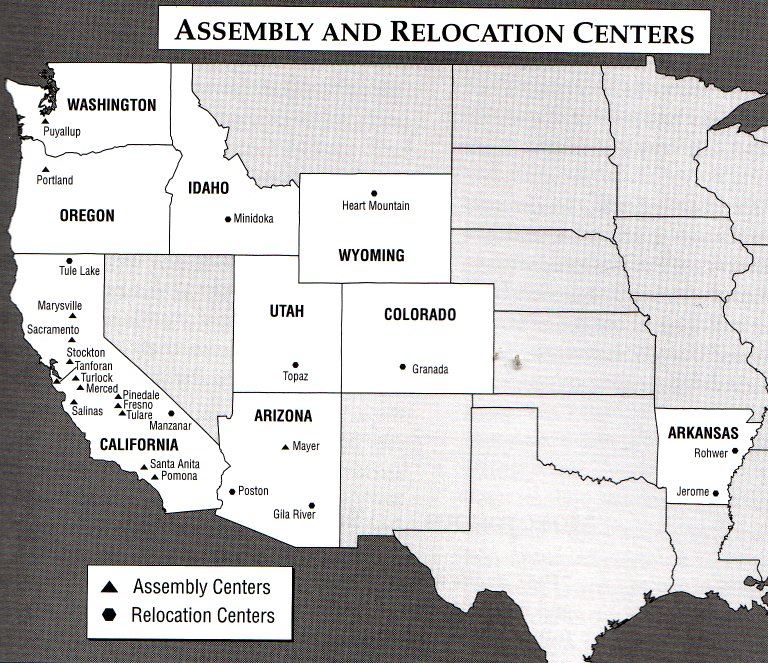
The Internment of the Japanese

book by Diane Yancey, 2001
(Note: as I have done with some other books I have only noted things in this book that are either not in other books or are presented in a particularly interesting manner. This book is, as are many others like it, very well done and absolutely filled with information.)
The book opens up with a nice statement about what happened: "The internment of the Japanese stands as an example of what happens in a democracy when racism is unchecked and mass hysteria replaces calm and rational thinking."
The book examines the influx of Chinese into the U.S. to work in mines and on railroads and the type of prejudice this led to, then notes that Japanese who came to this country ended up facing exactly the same type of prejudice. As early as 1905 an Asiatic Exclusion League was formed in San Francisco by businessmen who wanted Japanese immigration ended.
The term "yellow peril" was coined to describe the fear of the Japanese and of their settling in the U.S. From 1905 on at least one anti-Japanese bill a year was presented to the California government.
Right after Pearl Harbor some 3,000 people were arrested, half of them Japanese-Americans. What was their crime? They had money in Japanese banks, they were ministers, language teachers, fishermen, journalists. etc. Thus, by FBI thinking, they were potentially dangerous.
The book makes reference to the Japanese submarine attack near Santa Barbara at an oil refinery. The book notes that, even though 25 inch shells were fired, about all that was damaged was the end of one pier. It did set off a panic, though.
Things the government doesn't want to pay attention to it won't, including a study that showed that Tokyo distrusted the Japanese Americans, and that at least 90% of the first generation American born Japanese were without a doubt loyal, and at least 75% of the Japanese immigrants were loyal. The report also noted that the Japanese Americans did not work in "sensitive" positions and, because of their distinctive appearance, would make poor choices for spies. The report was not made public, though.
The book talks about why Germans and Italians were not rounded up and notes that there were about 1 million of those citizens living in the U.S., that many with German and Italian ancestry were already mayors and other public figures, and that many Germans had already fled to the U.S. to escape German oppression. Thus, it was considered neither practical nor politically feasible to round up those two groups.
Some of the things the people endured in the assembly centers (the places where they were stationed before they were shipped out to relocation centers), were living in areas that had recently been horse stalls, food poisoning from improper food preparing standards (they ate in mess halls), plumbing that backed up (in the communal toilets; the living quarters did not have their own toilets, running water or showers.)

The book then talks about the people who went out of the camps to work on farms temporarily (and sometimes faced violent attack as a result), and students who were allowed to continue their education outside the camps (although this did not always go well as some student were met with hostility and sometimes even kicked out of the schools before they could enter them.)
Next discussed is the use of Japanese-Americans in World War II where they served with great honor.
The Tule Lake center, the place for the "no-no's" on the loyalty questionnaire had its barbed wire doubled, the military guard was increased to battalion strength and tanks were brought in.
The next section of the book is about the legal movements to end the internment and the gradual slowing down of the program, along with FDR's refusal to speed things up since he was concerned about being re-elected.
Then there is a discussion about the problems the Japanese-Americans faced when some of them tried to return to the west coast areas where they once lived, problems often centered around businessmen and workers who did not want Japanese around worker for less than them and businessmen who did not want Japanese opening stores and competing with them (since the Japanese generally did well once they opened a store.)
Main Index
Japan main page
Japanese-American Internment Camps index page
Japan and World War II index page
|